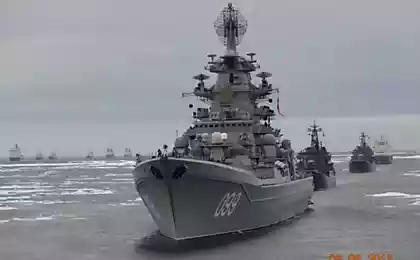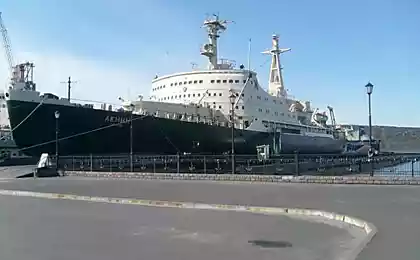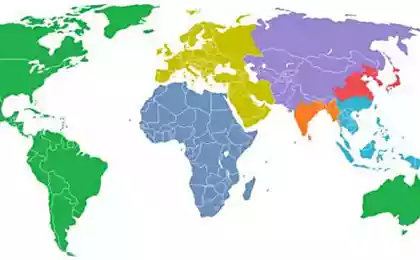563
Arctic ice is so short that geographical atlases longer irrelevant
The most significant changes on the cards for the last 20-odd let
number of Arctic sea ice has been steadily declining. But now it has been reduced so that new maps «National Geographic» ice would occupy a much smaller space, and it is the most significant changes on the cards since the collapse of the USSR.

Up to this point «National Geographic» used the map of the Arctic edition of its Atlas of 1989. However, since that time not only the area, but also the amount of sea ice in the Arctic (as shown in the graph of volume of sea ice in the Arctic from 1979 to the present time, shown below) fell sharply. In the latest edition, which will be released in September, the lines will outline a much smaller space, based on data from NASA and the National Data Center of snow and ice (NSIDC) the number of the remaining multi-year ice.
via factroom.ru

number of Arctic sea ice has been steadily declining. But now it has been reduced so that new maps «National Geographic» ice would occupy a much smaller space, and it is the most significant changes on the cards since the collapse of the USSR.

Up to this point «National Geographic» used the map of the Arctic edition of its Atlas of 1989. However, since that time not only the area, but also the amount of sea ice in the Arctic (as shown in the graph of volume of sea ice in the Arctic from 1979 to the present time, shown below) fell sharply. In the latest edition, which will be released in September, the lines will outline a much smaller space, based on data from NASA and the National Data Center of snow and ice (NSIDC) the number of the remaining multi-year ice.
via factroom.ru
8 coolest photos of animals from the community «National Geographic»
Five parts of the earth, where the object can achieve complete immobility in a rotating coordinate system























